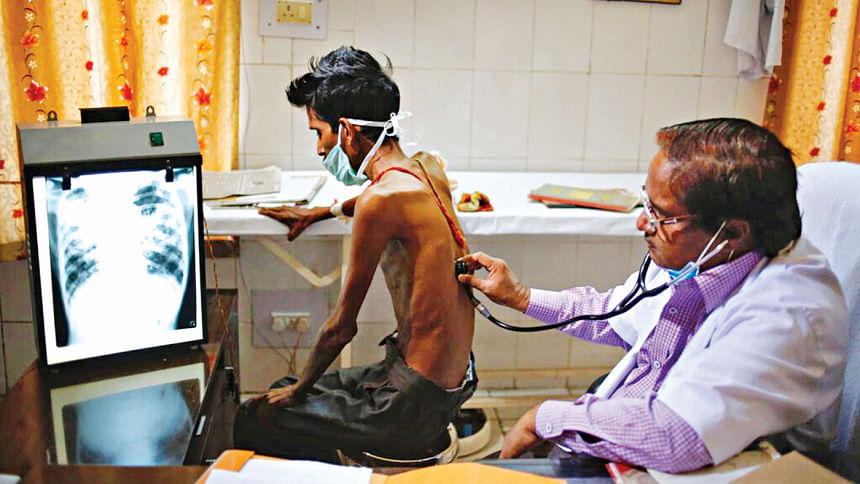World TB Day 2021: The clock is ticking

More than a century has passed since the March 24, 1882, announcement by Robert Koch that Mycobacterium tuberculosis (Mtb) bacteria cause tuberculosis (TB), but the disease still ranks as one of the world's great killers, claiming some 1.4 million lives in 2019 alone. Concerted efforts are needed to combat TB, even as we stand in the shadow of the COVID-19 pandemic, which threatens to slow or reverse progress in global TB control.
The World TB Day is observed every year on March 24 to raise public awareness about the devastating health, social and economic consequences of TB, and to step up efforts to end the global TB epidemic. The 2021 World TB Day theme, 'The Clock is Ticking', reminds us that time is of the essence. The research needed to identify, develop, test, and deliver new or improved TB diagnostics, treatments, and vaccines.
TB-causing bacteria spread through the air and the disease usually affects the lungs, although other organs and parts of the body can be involved. Most people infected with Mtb can co-exist with the bacterium for months, years or a lifetime without ever developing symptoms (termed latent TB infection.) By some estimates, up to a quarter of the world's population has latent Mtb infection. People with latent TB infection cannot transmit the bacteria to others. However, they have a 5-to-10% lifetime risk of developing active TB. Symptoms of active pulmonary TB disease include cough, fever, and weight loss. Malnourished individuals, smokers, people receiving immunosuppressive therapies, and those with compromised immune systems, including those with untreated HIV infections, are at increased risk of developing active TB.
Drugs are available to treat TB, but treatment regimens are complex, lengthy, and often accompanied by toxic side effects. Incomplete therapy can drive the rise of multidrug-resistant (MDR) and extensively drug-resistant (XDR) TB. Treatment for MDR-TB can last two years and is not always successful. Cases of XDR-TB may not respond to drug treatment at all. In 2019, there were an estimated 206,000 cases of confirmed MDR-TB worldwide, of which 12,000 were XDR-TB. Shortening the length of effective TB treatment regimens would have important benefits for individuals with TB and could also slow the emergence of MDR and XDR-TB.
In 2020, a landmark clinical trial demonstrated that a four-month daily treatment regimen containing high-dose rifapentine and moxifloxacin is as safe and effective as the existing standard six-month daily regimen at curing drug-susceptible pulmonary TB disease. This regimen is the first successful short-course treatment regimen for drug-susceptible TB disease in more than 40 years.
Vaccine research advances provide a shot of hope: A broadly effective vaccine capable of preventing Mtb infection or active TB disease would have a profound impact on TB cases worldwide. The Bacillus Calmette-Guerin (BCG) TB vaccine is 100 years old in 2021 and remains the only commercially available TB vaccine. BCG vaccine protects infants and children from disseminated TB disease and death, but this protection does not extend to adults with pulmonary TB, the most common form of the disease. Thus, improving BCG and developing new vaccines remains a priority goal. A clinical development program has begun with a recombinant strain of BCG for use in a proposed Phase I trial of BCG vaccination by intravenous route.
Eye on the future: The clock is indeed ticking, and on World TB Day 2021, it is important to reflect on the dedication of scientists, clinicians, trial volunteers, and others who work tirelessly to make TB a disease of the past. Countries should come forward to apply cutting-edge research, investment, and collaboration to make that day come soon.
Source: National Institute of Allergy and Infectious Diseases (NIAID), USA.

 For all latest news, follow The Daily Star's Google News channel.
For all latest news, follow The Daily Star's Google News channel. 



Comments